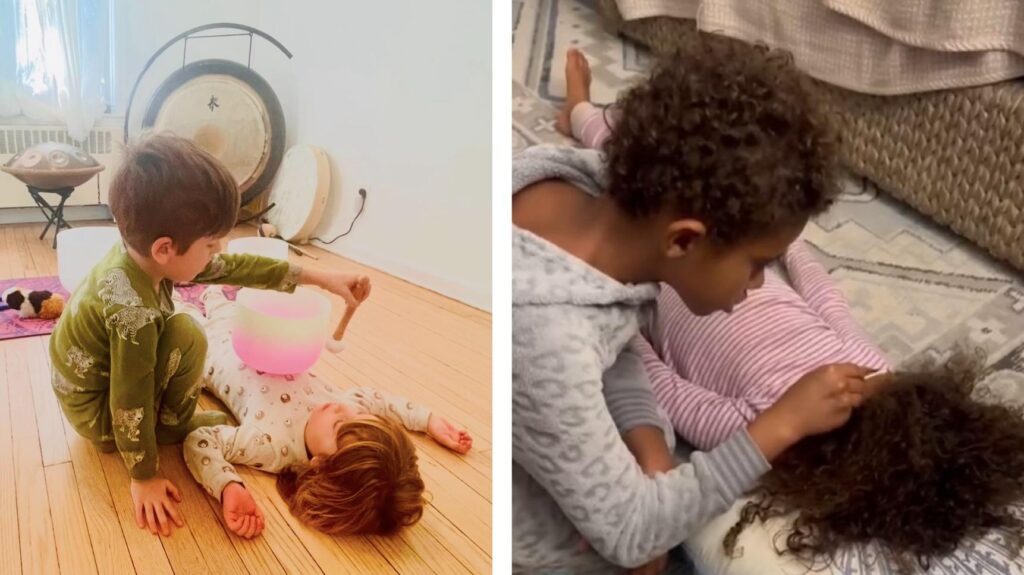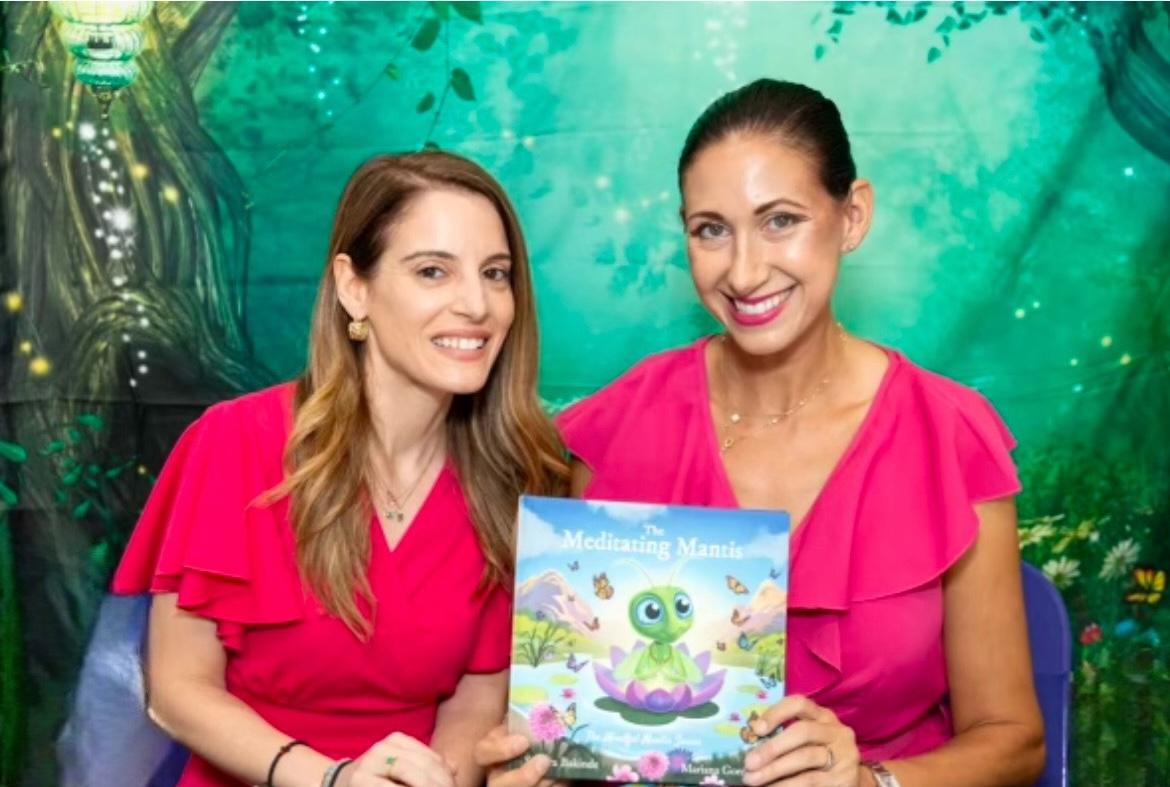Between pings, scrolls, and autoplay, it is easy for home life to run at the speed of notifications. The cultural tide is turning toward calmer attention, steadier routines, and kinder evenings. Founded by Mariana Gordon, a mindfulness educator and former children’s counselor, and Sondra Bakinde, an artist and wellness advocate with a background in family engagement, The Mindful Mantis offers playful, research-informed tools that help mindful families shift the tech conversation from rule enforcement to lasting nervous system care.
Why This Moment Is a Cultural Reset
For years, the screen time debate centered on minutes and apps. Today, parents are asking a different question. What does constant stimulation do to our bodies, moods, and relationships? The answer points toward a reset. When devices set the pace, kids often swing between hyperfocus and irritability. When families set the pace, children experience safety, choice, and connection. That is the heart of mindful parenting. Not anti-tech, pro-regulation. Not zero screens, smart use paired with rituals that ground the body.
Framing the shift as a cultural reset helps everyone get on the same team. We are not punishing fun. We are protecting attention and sleep. We are choosing experiences that help kids notice their bodies and name their feelings, which is the foundation of emotional wellness.
Nervous System 101 for Busy Parents
Kids learn regulation inside relationships. Their developing nervous systems borrow adult steadiness, then practice returning to calm on their own. A few key ideas make the difference:
- State drives behavior. Over arousal looks like racing thoughts, reactivity, or I cannot listen. Under arousal looks like zoning out, or I cannot start.
- Sensory input matters. Fast cuts, bright colors, and unpredictable rewards fuel arousal. Slow breath, heavy work, and predictable steps help the body settle.
- Language organizes experience. When we name a feeling accurately, the brain understands the story and softens.
These basics make children’s mindfulness practical. You are not fixing a behavior; you are guiding a state shift with simple, repeatable cues.

Spotting Tech Overload in Real Time
Every child is different, but common signals appear after long or intense screen sessions:
- Big feelings on small requests, like turning off a device or moving to dinner.
- Trouble switching tasks, even when the next thing is enjoyable.
- Sensory seeking or avoidance, such as crashing into cushions or avoiding light and sound.
- Sleep struggles, wired and tired at the same time.
Notice patterns without blame. Curiosity keeps the nervous system safer than criticism. Share observations in simple language. Your body looks buzzy. Let us help it settle, then we will choose the next fun thing.
The Reset Protocol: Three Steps in Under Five Minutes
This protocol is designed for short attention spans and busy schedules. Use it after screens, before homework, or whenever reactivity spikes.
1) Name
Offer two or three feeling words and let your child choose. Are you feeling mad, disappointed, or just not ready to stop? Accuracy matters more than perfect calm. For boys and girls, consistent naming builds emotional literacy that lasts.
2) Breathe
Keep kids’ meditation sensory and playful. Two minutes is plenty.
- Balloon breath: hands on belly, inhale to expand, exhale to soften.
- Star tracing: trace five points on a hand, inhale up, exhale down.
- Hot cocoa breath: smell the cocoa, then blow to cool with a longer exhale.
3) Choose
Offer agency with two good options. Do you want water and a stretch, or outside for five minutes? Choice preserves dignity while guiding action. Afterward, reflect briefly. I felt buzzy, I breathed, I chose water. That tiny debrief wires confidence.
Make Tech Work for Mindful Families
A healthy digital life blends access with anchors. Think small, portable, and repeatable.
- Predictable bookends. A start ritual and a stop ritual tell the body what is happening. Start with three balloon breaths, end with a stretch and a glass of water.
- Device parking. Put phones and tablets on a sleeping tray during meals and bedtime routines so connection can lead.
- Two-minute playlist. Use the same track to cue transition from screens to homework or bath. Music sets the pace better than reminders.
- Move the body. Wall pushes, chair squats, or a quick hallway walk bring heavy work that resets arousal.
- Shared language. Post a simple card that says Name it, breathe it, choose it. Consistency, not intensity, builds skills.
For families who want guided support, the short, playful lessons in the Magic Mantis Course translate neuroscience into everyday scripts and mini practices. Parents get a common language, kids get stories and games that make calm feel doable.
Bridging Home, School, and Caregivers
Kids thrive when the same cues show up across settings. Ask teachers what transition tools they use at school, then mirror one at home. A feelings menu on the fridge, a breathing poster near the backpack hook, and a shared phrase like Try a balloon breath first create continuity. Grandparents and sitters can use the same script so the nervous system does not have to relearn expectations in each environment.
If your child’s class already practices children’s mindfulness, send a note of appreciation and ask for a favorite activity. Repeat it at bedtime. Familiarity lowers resistance and speeds up regulation, especially after stimulating media.

What Progress Looks Like on a Busy Week
Real change is quiet. Look for shorter meltdowns, faster re-entry after screens, and smoother task switching. Notice when your child uses words before yelling, or suggests a breath without a prompt. Celebrate effort. Your own regulation is the best teacher. Kids borrow our calm before they build their own.
Remember that mindful parenting is not about perfect rules. It is about repairing quickly, modeling skills out loud, and building rituals that travel wherever life takes you. Small, daily resets are how family culture changes.
A Nurturing Next Step
Choose one reset ritual and try it for five days. Keep it short, visible, and kind. If your family loves stories that make calm feel fun, begin your wind-down with a cozy read-aloud of The Meditating Mantis book. One named feeling, one steady breath, one wise choice at a time, that is how tech overload gives way to a nervous system reset that your whole home can feel
At The Mindful Mantis, we love meeting parents right where they are. If you want a playful story that doubles as a meditation, explore The Meditating Mantis and Mio & The Stoic Spider, which is a gentle, science-savvy way to begin a lifelong practice of calm and resilience, one page and one breath at a time.


